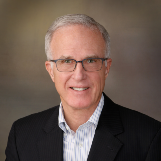If you really want ad transparency, it's time to restructure the market

Opinion
Good intentions alone won’t fix online advertising’s lack of transparency. There must be a big change in the financial structure of the marketplace.
A recent article in The Media Leader reminded me that “the more things change, the more they stay the same.” Some of the issues programmatic advertisers face today are similar to those faced by television advertisers decades ago.
Last month Jack Benjamin wrote about the efforts of Nandini Jammi and Claire Atkin, who established their non-profit advertising watchdog Check My Ads to defund companies they feel are bad actors and sources of disinformation. Jammi and Atkin explain how advertisers inadvertently subsidize views contrary to their own because adtech is so opaque and complex; advertisers often do not know where their programmatic digital ads are running.
For example, advertisers who wish to exclude Steve Bannon’s Real America’s Voice may end up advertising on that channel anyway because of a practice known as “dark pooling” — “wherein advertisers seek to negotiate direct programmatic purchases on one website but unintentionally end up spending money on a “pool” of websites…”
The problem of not knowing where ads are running is nothing new
The lack of transparency can be a major problem with adtech, but the problem of not knowing where ads are running is nothing new for advertisers.
When I started my career as a media planner at Ogilvy & Mather, the agency bought audience not specific shows. GRPs (gross rating points) were bought from the networks to deliver reach and frequency goals for the desired demographics. It was the same with spot buying. We bought “avails” in the desired dayparts. That’s as granular as it got.
The process may not have been opaque by design, but no agency had enough staff to watch every show on every network being bought — so buyers often had no idea what other ads were adjacent to their clients’ ads until we got a post-buy report.
Television could deliver mass reach, but there was little to no control over content or other advertising that might run adjacent to our clients’ brands. Brand safety was not such a serious issue as it is today, because prevailing broadcast standards prevented the airing of much content that could be considered objectionable. The broadcast ecosystem was not vilified at that time for its opacity, but the lack of transparency was similar to today.
Direct placements and PMPs can be a benefit
Most marketers trying to use the internet to deliver the right message to the right person at the right time could not have foreseen the huge impact of factors like ad fraud, bots, and sketchy third-party data that have turned this promising dream into a programmatic nightmare on open exchanges. Even when digital agencies attempt to provide fraud prevention and strict brand safety protocols, there is evidence that these measures are frequently circumvented.
Open exchanges are not only subject to fraud but to other types of deception. In one striking example, Foundry (formerly IDG) gave up their open-web revenues in favor of direct and PMP (Private MarketPlace) deals three years ago after Foundry’s president found how bad actors were abusing the open exchanges (by bidding not to win but to gain access to data).
Media planners had much more control over context and adjacency when we bought magazine space. A magazine about cars naturally attracted endemic automotive product and service advertising and possibly near-endemic advertising like travel destinations or lifestyle. Magazine costs per point seemed high compared to broadcast, but planners could choose magazines whose content and demographics made sense for the brands.
In my view, increasing the usage of direct placements and Private Marketplace (PMP) deals can benefit publishers and advertisers alike. Direct sales offer advertisers brand safety, custom ad units and native advertising, premium inventory, contextual targeting, sponsorship opportunities, and first-party audience data. Direct placements and PMP deals offer higher CPMs for publishers as well. Direct buys from vertical sites focused on specific areas of interest offer many of the benefits that magazines do.
But there is a downside. It costs more to do business this way. It takes more time and talent from both buyers and sellers — both in short supply due to the financial pressures agencies and publishers are under today.
Without a big change in the financial structure of the advertising marketplace, I don’t think we will see a huge shift regardless of the desirability of more hands-on buying. When the question is, “how inexpensively can we do the transaction?” — instead of “how effective can we make our investment?” — automation has the edge.
It’s easier and quicker to buy programmatically. Programmatic spending is expected to account for more than 90% of digital display spending in 2022 — more than $115bn — according to eMarketer.
Be wary of programmatic ad fraud
Do I recommend abandoning all programmatic advertising? No, of course not, particularly for transactions that do not generate enough revenue to justify hands-on, human involvement every step of the way.
But I would urge publishers and advertisers to be aware that a large percentage of their spend could be wasted on fraudulent impressions and bots, and to use all available tools to rigorously investigate the adtech they are using.
Statista estimated that digital ad fraud in the US reached $13.8bn in 2020, and they predicted that ad fraud would grow exponentially to more than $100bn worldwide by 2023. Fraud detection solutions from companies such as DoubleVerify and Integral Ad Science, and advanced fraud detection tools provided by Dr. Augustine Fou of Fou Analytics, need to be evaluated and implemented to reduce waste.
Agencies that buy digital media this way — and their clients — know exactly what they are getting. It just takes more time, money, and effort to invest in quality.
 James G. Elliott has served as president of outsourced media sales firm James G. Elliott Co. since its founding in 1984. He is also a member of the SIIA CEO Council.
James G. Elliott has served as president of outsourced media sales firm James G. Elliott Co. since its founding in 1984. He is also a member of the SIIA CEO Council.




